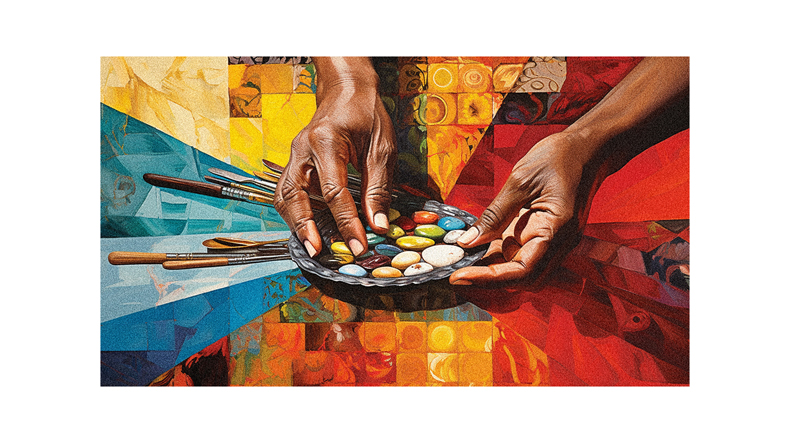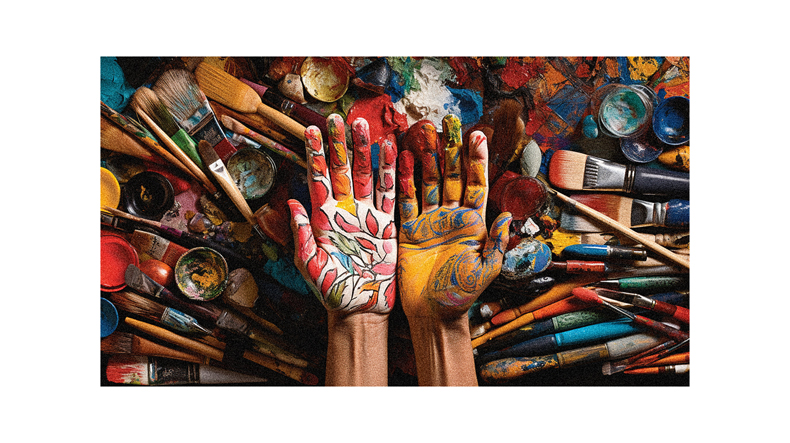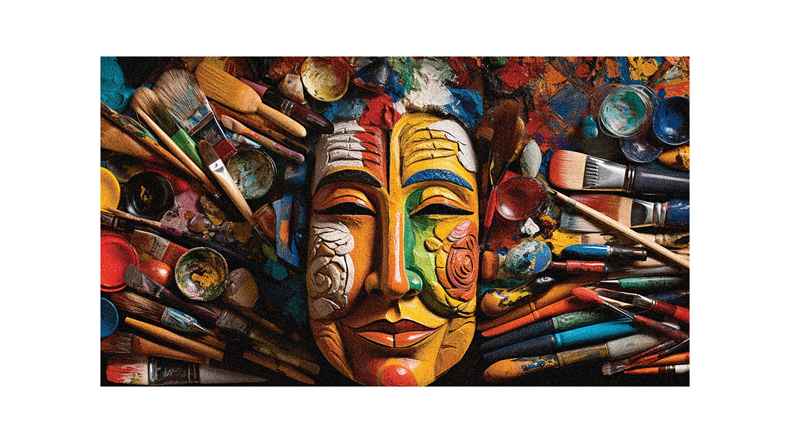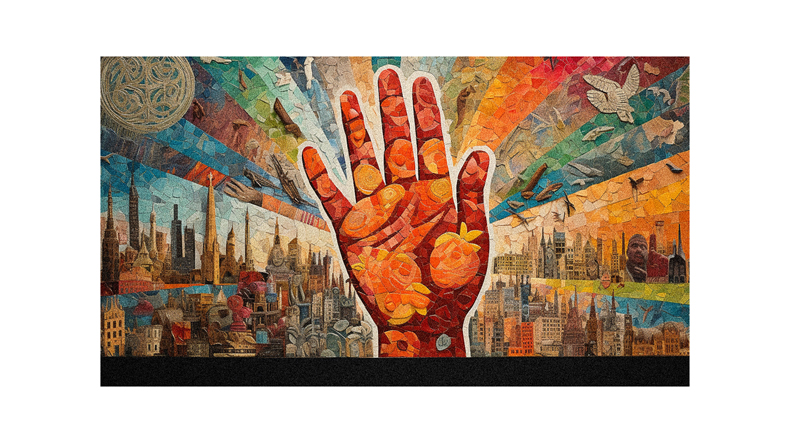Imagine holding a mirror to culture; what do you see? Art is an embodiment of our heritage and identity. In this piece, you’ll explore how culture shapes art, influencing aesthetics, styles, and interpretation. You’ll dive into how art reflects and preserves cultural values while challenging them. Ready to embark on this journey of discovery? Let’s delve into the impact of culture and heritage on artistic expression.
The Role of Cultural Identity in Artistic Expression

You’ll find that your cultural identity significantly influences your artistic expression, shaping your style and the subjects you choose to portray in your work. Your culture, be it the traditions you grew up with or the values you’ve adopted, is a wellspring of inspiration from which you draw.
That unique essence separates your art from the rest, making it yours. Your cultural identity isn’t just about where you’re from; it reflects your experiences, beliefs, and values. It’s not static; it evolves as you grow and change. This transformation is reflected in your work, giving it depth and an evolving narrative. Remember, your art visualizes your culture and identity, a powerful tool to express and preserve your heritage.
Cultural Heritage: A Source of Inspiration for Art

Your roots and traditions can significantly inspire your creativity, often as a foundation for your artistic endeavors. Being a confluence of customs, beliefs, and experiences, your cultural heritage can act as a powerful muse. It’s not just about drawing from the past; it’s about understanding the essence of your culture and using it to shape your artistic output.
Here’s how you can tap into your cultural heritage for artistic inspiration:
- Explore Your Past: Dive into your family history, ancestral stories, and folklore. They’re often rich with scenarios, characters, and themes that you can weave into your work.
- Learn Traditional Art Forms: Embrace the traditional art forms of your culture. You’ll find unique techniques, motifs, and styles to enhance your creative expression.
- Engage with Your Community: Participate in cultural events, traditions, and ceremonies. Observing and experiencing these practices can provide you with many ideas and insights.
- Travel: Visit places of cultural significance. The architecture, landscapes, and people you encounter can spark your imagination unexpectedly.
Cultural Influences on Artistic Styles and Techniques
Cultural nuances can significantly shape the styles and techniques in your art, adding a distinct flavor that’s uniquely yours. Your roots, traditions, and heritage are critical in perceiving and depicting the world. They’re not just influences; they’re your artistic ammunition, fueling your creativity and setting the tone for your work.
You might find yourself drawn to specific colors, forms, or subjects, reflecting your cultural mindset. Your heritage can make your art more personal and more powerful. It’s not just about aesthetics; it’s about telling your story and sharing your world. So, embrace your culture and let it seep into your art. Use it to push boundaries, challenge norms, and express your identity. Your culture isn’t just part of you; it’s part of your art, making it truly yours.
Exploring Cultural Identity Through Artistic Mediums
Exploring various artistic mediums can be a powerful way to delve into your cultural identity. It’s not just about creating art; it’s about understanding who you are and where you come from. You can use art to reflect on your heritage, celebrate your culture, or question the norms and values you’ve grown up with.
Consider these steps:
- Experiment with different mediums. Find what resonates with you, whether painting, sculpture, photography, or digital art.
- Explore themes related to your cultural identity in your work.
- Use art to express your feelings about your culture and heritage.
- Share your art. It’s a way for others to understand your cultural perspective.
Through art, you’re creating, discovering, and expressing yourself.
Cultural Identity and the Evolution of Art
In the evolution of art, you’ll see that one’s sense of identity plays a significant role in shaping their style and themes. Your cultural background isn’t just a part of who you are—it heavily influences your art.
It’s the lens through which you interpret the world and often the story you tell through your creations. Whether you’re sketching your hometown’s vibrant markets or weaving your ancestors’ old legends into a novel, your heritage permeates every stroke, every word. But it’s not just about reflecting on the past. It’s also about understanding the present, questioning societal norms, and imagining a future. So, let your culture guide your artistic journey. It’s your unique voice in a world full of noise.
Cultural Preservation and Its Impact on Artistic Expression
Preserving traditions, customs, and values from your background can give your artwork depth and richness. It’s more than just an aesthetic choice; it’s a way to connect with your roots and bring that culture into a contemporary context.
Incorporating your heritage into your art can:
- Foster a deeper understanding of yourself and your background.
- Offer a unique perspective to viewers unfamiliar with your culture.
- Serve as a form of cultural preservation, maintaining traditions that may otherwise be lost.
- Provide a sense of continuity and connection to the past.
The Intersection of Culture and Art: A Powerful Connection
Now, let’s delve into the powerful connection between culture and art. Think about how your culture shapes your perspective and your artistic expression. It’s in the colors you choose, the stories you tell, the symbols you use. Your culture is the lens through which you see the world, and it’s reflected in your art.
This intersection of culture and art is a potent force. It enables you to communicate complex ideas, emotions, and experiences. Your art can become a bridge, fostering understanding and empathy among diverse cultures. It’s a way for you to preserve your heritage and pass it on to future generations. So, embrace the influence of your culture. Let it inform your art, giving it depth, relevance, and authenticity.
Cultural Identity and the Interpretation of Artwork
Your cultural identity plays a significant role in how you interpret and relate to different pieces of artwork. It’s a lens through which you view and make sense of the world, including the art you encounter. Because art often expresses the artist’s cultural background and experiences, your cultural identity can impact how deeply you connect with a piece or what emotions it evokes in you.
Here are four ways your cultural identity influences your interaction with art:
- It shapes your perception and interpretation of art.
- It affects how you emotionally connect with different pieces.
- It may influence your artistic preferences and tastes.
- It can inspire a deeper appreciation for art reflecting your cultural experiences.
Cultural Diversity and Its Influence on Artistic Innovation
Diversity in your background can spark innovation in your art, bringing fresh perspectives and unique styles to your work. Your cultural heritage and experiences can become a rich source of inspiration, adding depth and authenticity to your creations. It’s not just about the colors you choose or the subjects you depict; it’s about the stories you tell, the emotions you evoke, and the conversations you start.
Cultural diversity in art breaks barriers, opens minds, and encourages dialogue. It’s a celebration of differences and a testament to the human spirit. So, embrace your roots, explore your identity, and let your culture shine through your art. After all, it’s your unique voice that makes you an artist, and it’s your culture that makes your voice unique.
Art as a Reflection of Cultural Values and Beliefs

In your art, you’ll often find reflections of the values and beliefs instilled by your cultural background. It’s fascinating how culture seeps into your creative endeavors, subtly coloring your perspectives and shaping your artistic identity.
Let’s consider a few ways this could manifest:
- Motif and Symbolism: You might use symbols, patterns, or motifs common in your culture, embedding them in your art as a nod to your heritage.
- Technique: The techniques you employ might be those passed down through generations within your culture.
- Theme: Your art could explore significant themes or narratives in your cultural heritage.
- Color and Style: Your work’s colors, style, or aesthetic might be influenced by your cultural background.
Follow us on Pinterest for more tips, tutorials, and artist reviews!





